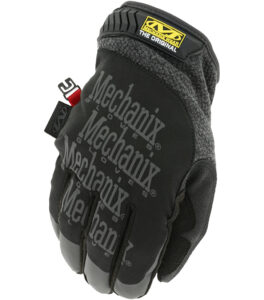June 8, 2024
| No Comments
Our everyday carry (EDC) isn’t just a collection of items you stuff into your pockets; it’s a reflection of your preparedness and personality. Whether you’re navigating the urban jungle or exploring the great outdoors, having the right tools at your fingertips can make all the difference. Let’s delve into the essentials of an upgraded EDC, helping you refine your gear selection and be ready for whatever life throws your way.
Principles to Live By: Preparation is key. Adhering to the principle of “2 is one, one is none, 3 is better” ensures redundancy in your gear, minimizing the impact of loss, damage, or malfunction.
The list of the “C’s” from below, comes from Dave Canterbury’s Pathfinder system, which is a great “bare-bones” list of gear. Other equipment has been added that will be beneficial as an addition to your bag, making things easier and more efficient. While it is true that the more skills you attain, the less gear you need to carry with you. However, for the sake of expediency, it is usually not practical to go the minimalist route. Everything takes longer and you expend much more energy to accomplish simple tasks. If the goal is to get back to your safe location, then that’s what you should be doing. Each item you choose should have multiple uses.
Cutting Tools:

-
Folding Knife: Versatile and compact, a reliable folding knife is indispensable. This should really be part of your base gear that you keep on your person.
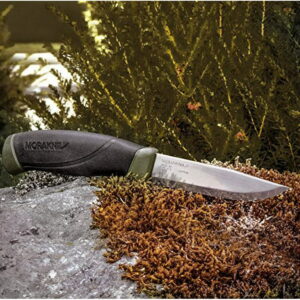
-
Fixed Blade (Mora): For robust tasks and durability, a Mora fixed blade is a solid choice.
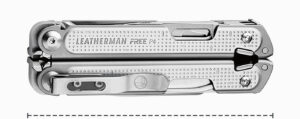
-
Multi-tool: With a variety of built-in tools, a multi-tool is like having a toolbox in your pocket. This is another item that you should consider carrying on your person.
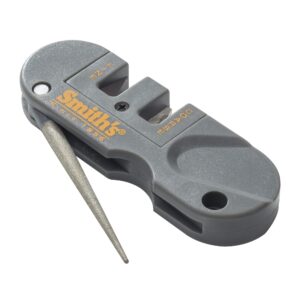
-
Sharpener: Keep your blades razor-sharp with a portable sharpener, ensuring they’re always ready when you need them.
Combustion Devices:
-
Lighter: A dependable lighter provides quick and easy fire-starting capabilities.
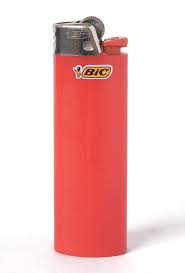
-
Ferro Rod: Reliable in any conditions, a ferro rod is a fail safe backup for starting fires.

-
Waterproof Matches / Wet Fire: For lighting in wet conditions, waterproof matches or wet fire starters are essential backups.
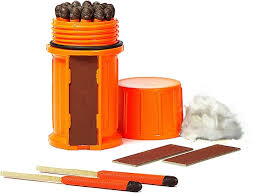
Covering:
-
Tarp: Versatile and durable, a tarp provides essential shelter from the elements.
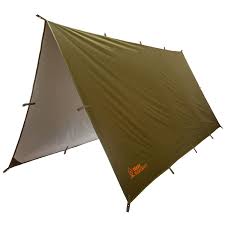
-
Plastic Garbage Bag: Lightweight and waterproof, a garbage bag serves multiple purposes, from emergency poncho to waterproofing gear.

-
Poncho / Shelter System: Stay dry and protected with a compact poncho or a complete shelter system for extended stays in the wilderness.
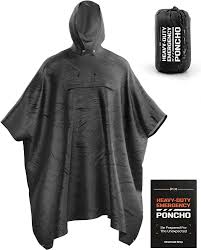
Cordage:
-
Paracord and Bank Line: Strong and versatile, paracord and bank line serve a multitude of purposes, from building shelters to securing gear.

Container:
-
Metal Non-Insulated Container: A durable metal container serves as a reliable vessel for cooking, boiling water, or storing essentials.
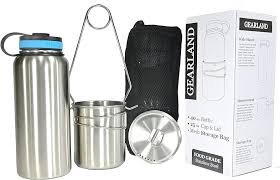
-
Nesting Cup: If space allows, a nesting cup adds versatility to your container options.
Navigation and Repair:
-
Compass: Navigate with confidence using a quality compass. This serves as a backup if you cannot use your phone to navigate.
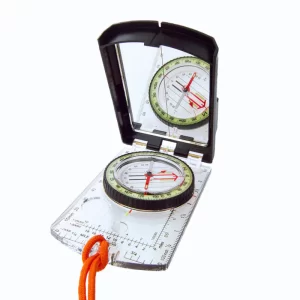
-
Cloth Sail Needle and Small Sewing Kit: Repair gear on the go with a compact sewing kit.
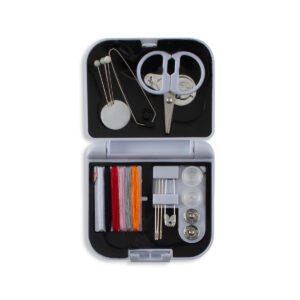
-
Candeling Device: Illuminate your surroundings with a flashlight, headlamp, or solar panel lantern. A headlamp is indispensable to allow for hands free navigation, gear repair, etc…
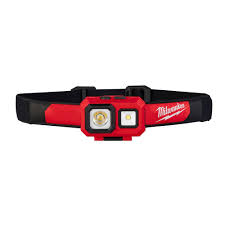
-
Cargo Tape (Duct Tape): The ultimate fix-all, duct tape is indispensable for repairs in the field.
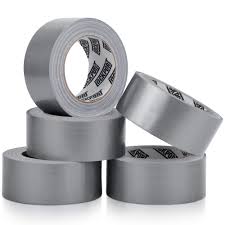
-
Cotton Bandana (Shemaugh): From first aid to signaling, a bandana is a versatile tool with countless uses.
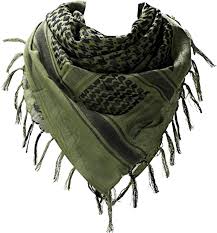
Safety and Communication:
-
Safety Glasses / Sunglasses: Protect your eyes from debris and UV rays with quality eye wear.
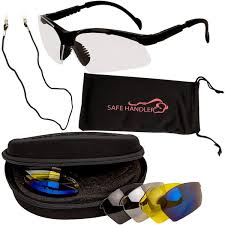
-
Portable Power Pack / Batteries: Keep your devices charged with a portable power pack or spare batteries.
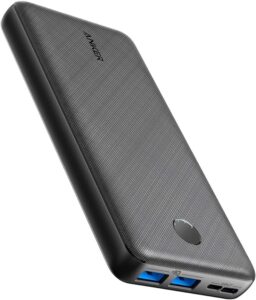
-
Water Filter System: Ensure access to clean water with a reliable filtration system like Sawyer and purification tablets.
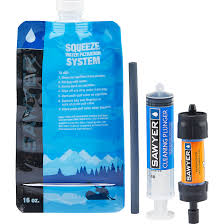
-
Firearm, Holster & Extra Mag: For personal protection, carry a firearm with holster and spare magazine.
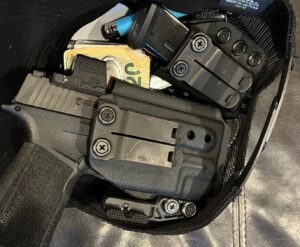
-
Pepper Spray: As a less-lethal option for self-defense, pepper spray provides a non-lethal deterrent.
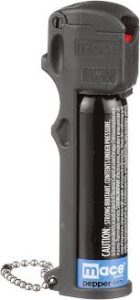
-
Secondary Communication Equipment: Stay connected with a portable radio for emergency communication.
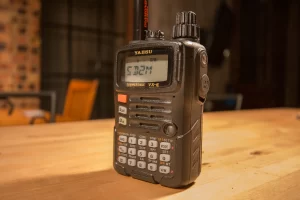
-
Water and Food: Carry ample water and some non-perishable food like nuts, jerky, and freeze-dried coffee for sustained energy. Water is essential. Consider adding some electrolyte packs to alleviate the effects of heavy sweating on your journey.
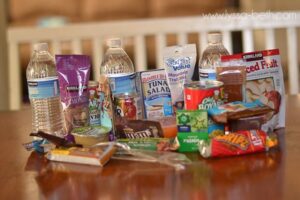
-
Spork / Spoon: Don’t forget utensils for mealtime convenience. While it is not really necessary, it is a simple item that makes eating easier. This is also helpful when you grab something at a drive-thru and are not given utensils.
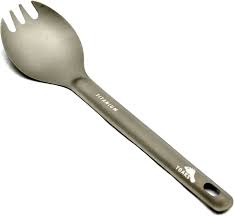
-
IFAK (Individual First Aid Kit): Be prepared for medical emergencies with essentials like a tourniquet, chest seal, Israeli bandage, and Quick Clot gauze. Have some extra rubber gloves included with the basic items.
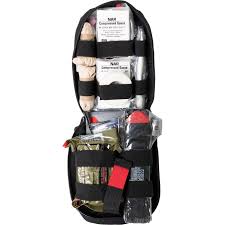
-
Medical Kit: Treat minor injuries and illnesses with bandages, antibacterial ointment, antiseptic wipes / wet wipes, anti-diarrhea medication, anti-inflammatory drugs, acetaminophen, and aspirin.
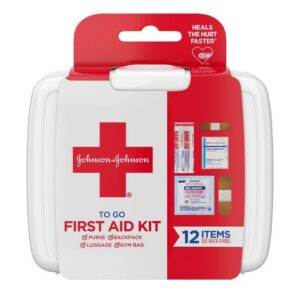
-
Packable Jacket: A compressible down jacket is a great option to keep in your pack that doesn’t take up much space, but offers significant warmth in cold temperatures.
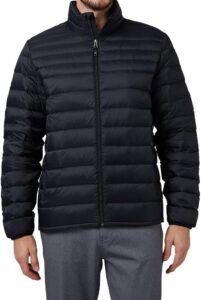
-
Socks: Having an extra pair of socks that you can change out to prevent issues with wet feet is another simple, but important item to keep in your kit. If you’re hiking a long way to your destination, you’re going to want a change of sock.
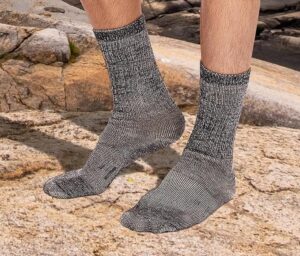
-
Work Gloves: Having a set of medium weight work gloves protects your hands and provides a degree of warmth in cold conditions.
